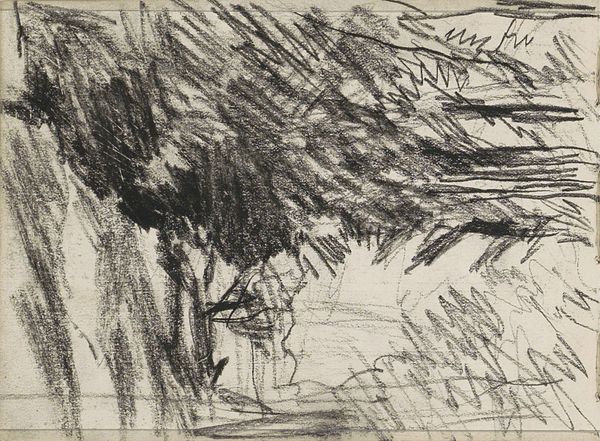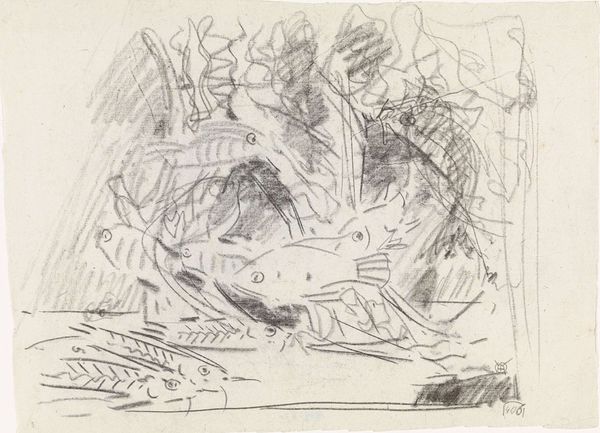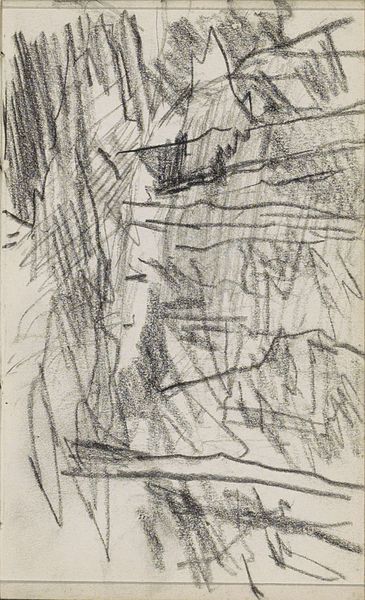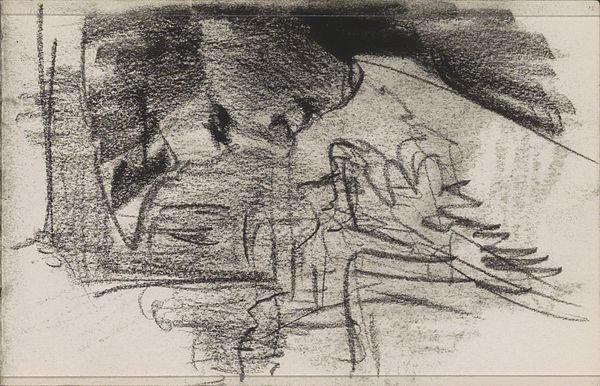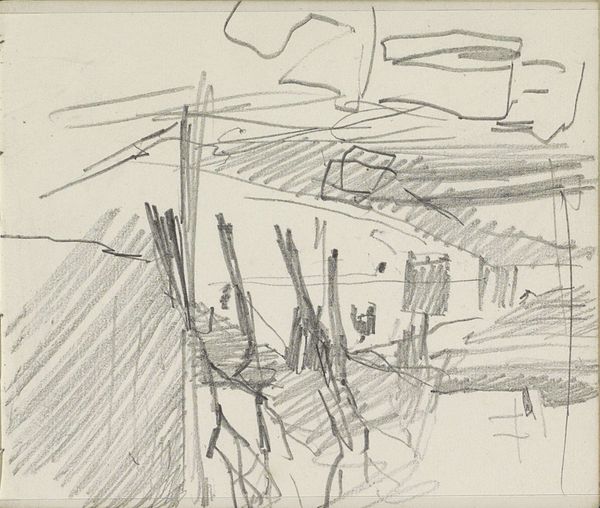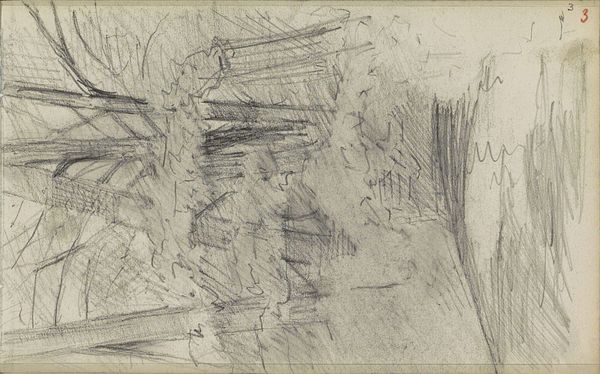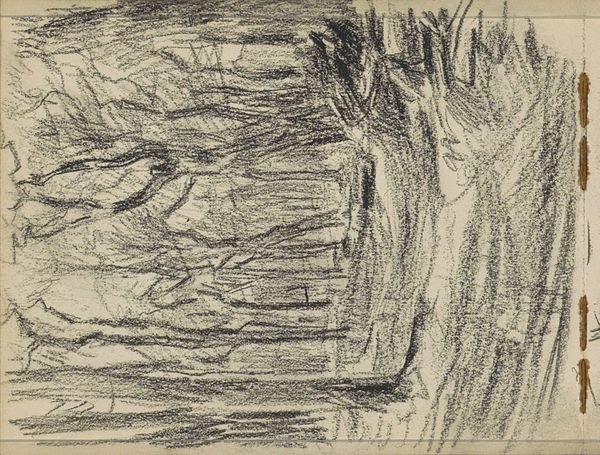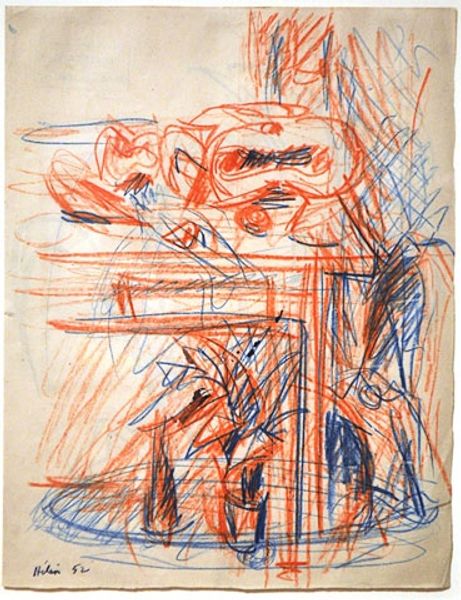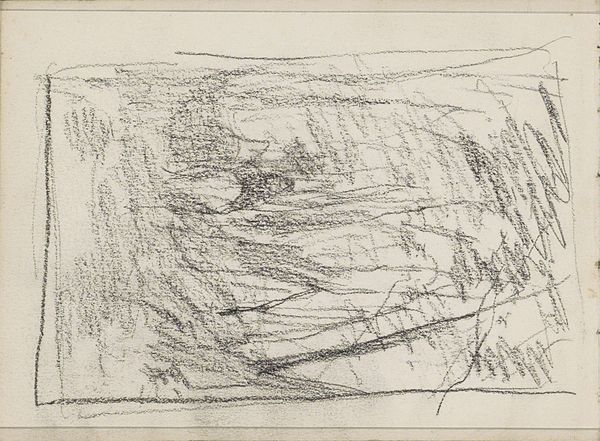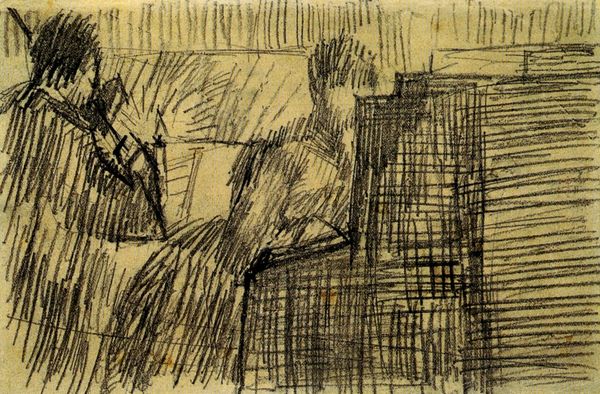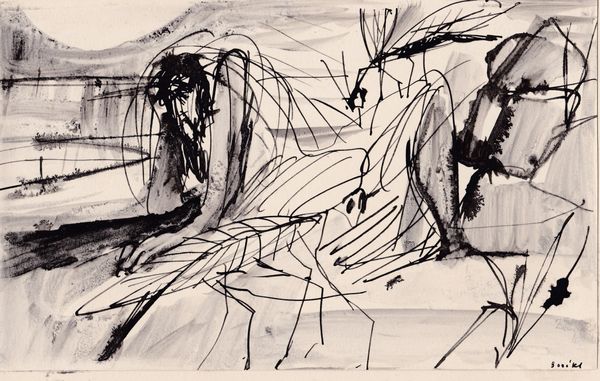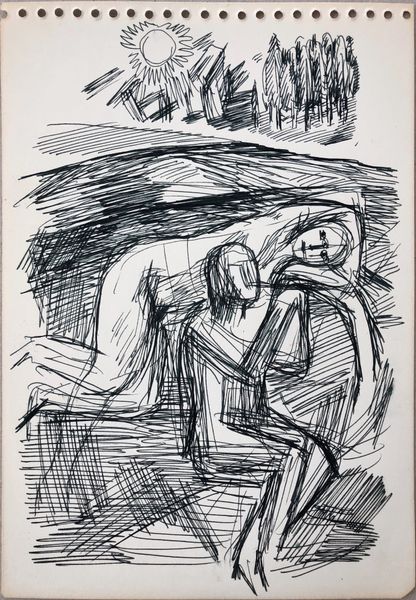
Dimensions: unconfirmed: 299 x 270 mm
Copyright: © Frank Auerbach | CC-BY-NC-ND 4.0 DEED, Photo: Tate
Curator: At the Tate, we find Frank Auerbach's charcoal drawing, a sketch from Titian's 'Bacchus and Ariadne'. It’s about 30 by 27 centimeters. Editor: Wow, my first impression is…energy. Like a visual storm captured in charcoal. The lines are so frantic, almost violent. Curator: Auerbach's engagement with the Old Masters is always mediated through his own lens of postwar trauma, and the anxieties surrounding identity in the diaspora. It's a dialogue between tradition and the present. Editor: It's interesting how he takes Titian's vibrant scene and reduces it to this chaotic dance of lines. Makes me think about memory, how it frays and reconstructs itself. Curator: Exactly. It’s less about replicating Titian and more about interrogating the very act of seeing, of remembering, and ultimately, of creating amidst historical and personal burdens. Editor: I feel a strange beauty in that struggle, a raw honesty that speaks louder than any polished masterpiece, perhaps. Curator: Absolutely, it prompts us to consider the layers of history etched onto even the simplest sketch. Editor: It's a reminder that art is always in conversation with what came before, wrestling with it, transforming it.
Comments
tate 6 months ago
⋮
http://www.tate.org.uk/art/artworks/auerbach-sketch-from-titians-bacchus-and-ariadne-t07628
Join the conversation
Join millions of artists and users on Artera today and experience the ultimate creative platform.
tate 6 months ago
⋮
From his days as a student at St Martin's School of Art in London (1948-52), Auerbach has spent many hours making drawings and paintings from works in the collection at the National Gallery in order, he remarked, 'to remind myself of what quality is and what's actually demanded of paintings' (Lampert, p.34). In 1995 the National Gallery's exhibition Frank Auerbach and the National Gallery: Working after the Masters demonstrated the importance of drawing to Auerbach's method, and the extent to which he used his numerous studies of paintings after Rembrandt, Titian and Rubens to help him compose his own figure studies and landscapes. This group of three sketches (T07628-T07630) made after Titian's Bacchus and Ariadne (1521-3) in the National Gallery was part of a commission from David Wilkie (1921-92). Wilkie had become fascinated with the work of the Italian Renaissance artists following a study of the Vatican's collection in Rome in the mid 1940s. He already collected paintings by Modern British artists and in 1965 commissioned Auerbach to paint a version of Titian's Tarquin and Lucretia in the Akademie der Bildenden Künst, Vienna (private collection). This resulted in two paintings, Study after Titian I (Tate T06683) and Study after Titian II (Tate T06684). Auerbach drew this sketch in front of the painting in the National Gallery. It is an analysis of the composition, in which the followers of Bacchus on the right are shown to make up an ordered group, whose shape points like an arrow at the figure of Ariadne on the left. The three drawings (T07628-T07630) pick out different aspects of Titian's construction of this picture. Hughes suggests that 'The specifics of the story take second place to an expression of the raw energy and emotion of the Titian, revealed paradoxically through the formal rigour of geometry' (Hughes p.31). The spontaneity of the sketch and bold use of pencil confirms this statement. Auerbach may have used this outline drawing as a preparatory study for his oil painting after Bacchus and Ariadne which he completed in 1971 (Tate T06687). Further reading:Robert Hughes, Frank Auerbach, London 1990Catherine Lampert, Norman Rosenthal and Isabel Carlisle, Frank Auerbach Paintings and Drawings 1954-2001, exhibition catalogue, Royal Academy of Arts, London 2001Colin Wiggins, Frank Auerbach and the National Gallery: Working after the Masters, exhibition catalogue, National Gallery, London 1995, reproduced p.30 Heather BirchallJanuary 2002
